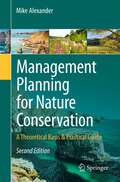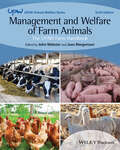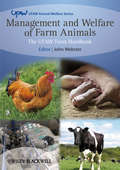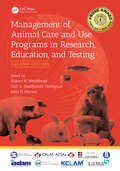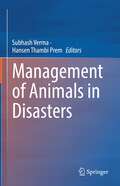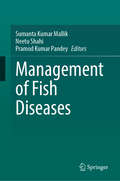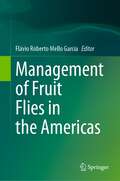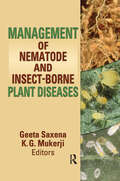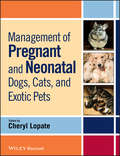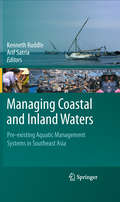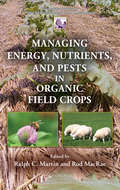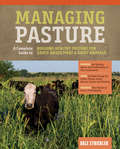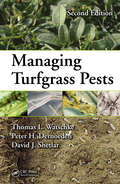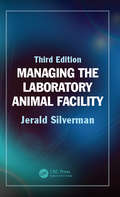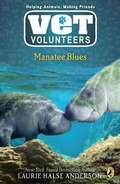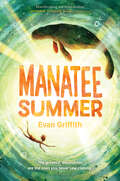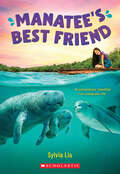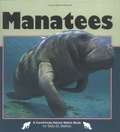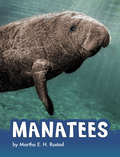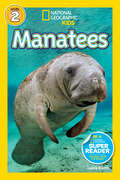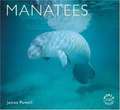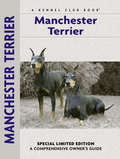- Table View
- List View
Management Planning for Nature Conservation: A Theoretical Basis & Practical Guide
by Mike AlexanderThe first edition of Mike Alexander's Management Planning for Nature Conservation, brought a new dimension to the modern literature on conservation management. This second edition, a significant enhancement of the original, deals with the development both, conceptual and practical, of adaptive management planning for nature conservation. It is about preparing management plans, and guides the reader through the entire process. Case-studies, including a conservation and access plan, demonstrate the planning process in action. This approach to planning can be applied to any place which is managed entirely, or in part, for wildlife. It can be applied to the management of species or habitats in any circumstance, regardless of site designation. The process is fully compatible with the Convention on Biological Diversity's 'ecosystem approach' to conservation management. Mike Alexander has long been at the forefront of developing management planning for conservation, with experience ranging from Uganda to Estonia, and from Costa Rica to Wales. He is the General Secretary of the Conservation Management System Consortium, a group of organisations with a common aim of raising standards and developing best practice in conservation management and planning. In 2012 Mike Alexander was elected a Fellow of the Society of Biology in recognition of his contribution to nature conservation and in particular management planning. This book has drawn on the experiences and expertise of the CMS consortium and other leaders in both conservation research and wildlife management from around the world. It is essential reading for professional conservation managers and any student studying management planning for conservation within a range of degree and postgraduate courses.
Management and Welfare of Farm Animals: The UFAW Farm Handbook (UFAW Animal Welfare #10)
by John Webster Jean MargerisonManagement and Welfare of Farm Animals provides comprehensive and up-to-date information on the humane management of all major farmed species in both large-scale food production and alternative farming systems. Designed for agricultural and veterinary science students, this classic textbook covers the management and welfare of species including dairy and beef cattle, veal calves, sheep, pigs, chickens, turkeys, goats, horses, and farmed fish. The sixth edition incorporates recent developments throughout, including an entirely new chapter on international developments in animal welfare law, politics, and practice. Updated chapters discuss topics such as 'high welfare' livestock systems, the impact of automation and new technologies on production and welfare, the ecological impact and sustainability issues of large-scale production systems, and more. Provides a basic understanding of the principles and practices of professional and humane farm animal management Covers animal husbandry, behavior as an indicator of animal welfare, and the assessment, monitoring, and promotion of improved welfare at the farm level Offers updated information on free-range poultry, robot milking, automated disease scanning, and pastoral systems in the developing world Includes less-common farm species such as South American camelids, ostriches, and game birds Management and Welfare of Farm Animals, Sixth Edition remains the ideal textbook for students in professional, technical, or vocational education courses on the management and welfare of farm animals.
Management and Welfare of Farm Animals: The UFAW Farm Handbook (UFAW Animal Welfare #9)
by John WebsterThrough successive editions, Management and Welfare of Farm Animals has gained international recognition as a classic introductory textbook for students of agriculture and veterinary science. Conceived by the Universities Federation for Animal Welfare (UFAW), the book has always sought to promote the humane treatment of livestock within the practical business context of modern farming. Now fully revised and updated, this fifth edition remains the most comprehensive and accessible guide available. Three animal groups appear here for the first time (game birds, South American camelids, and ostriches), and a chapter on horses has also been restored. Throughout, the book offers clear advice for the humane management of all major farmed species in the primary context of large-scale food production. However, this edition also takes full account of consumer demand (and legal requirements) for alternative farming methods and enhanced welfare standards, whether in conventional agriculture or the smallest of ‘hobby' farms. Brand new chapters reflect fresh understanding of welfare science, ethics, and the role of society in ensuring the best possible farm conditions. It remains an indispensable resource for students, and for all those seeking to promote animal welfare. Published as a part of the prestigious Wiley-Blackwell – UFAW Animal Welfare series. UFAW, founded 1926, is an internationally recognised, independent, scientific and educational animal welfare charity. For full details of all titles available in the UFAW series, please visit www.wiley.com/go/ufaw.
Management of Animal Care and Use Programs in Research, Education, and Testing
by Robert H. Weichbrod Gail A. Heidbrink Thompson John N. NortonAAP Prose Award Finalist 2018/19 Key features - Offers a revised, updated, and comprehensive first-line management book for those working in animal care and use programs who have the responsibility to ensure the welfare of the animals in the highest quality research environment - Serves as an indispensable resource text for certification exams and credentialing boards for a multitude of professional societies - Emphasizes the importance of developing a collaborative culture of care within an animal care and use program and provides information about how behavioral management through animal training can play an integral role in a veterinary health program - Provides a new section on Environment and Housing, containing chapters that focus on management considerations of housing and enrichment delineated by species - Expands coverage of regulatory oversight and compliance, assessment, and assurance issues and processes, including a greater discussion of globalization and harmonizing cultural and regulatory issues - Includes more in-depth treatment throughout the book of critical topics in program management, physical plant, animal health, and husbandry Biomedical research using animals requires administrators and managers who are knowledgeable and highly skilled. They must adapt to the complexity of rapidly-changing technologies, balance research goals with a thorough understanding of regulatory requirements and guidelines, and know how to work with a multi-generational, multi-cultural workforce. Management of Animal Care and Use Programs in Research, Education, and Testing, Second Edition is the extensively expanded revision of the popular Management of Laboratory Animal Care and Use Programs book published earlier this century. Following in the footsteps of the first edition, this revision serves as a first line management resource, providing for strong advocacy for advancing quality animal welfare and science worldwide, and continues as a valuable seminal reference for those engaged in all types of programs involving animal care and use. It has more than doubled the number of chapters in the original volume to present a more comprehensive overview of the current breadth and depth of the field with applicability to an international audience. Readers are provided with the latest information and resource and reference material from authors who are noted experts in their field. Co-publishers on the second edition are: ACLAM (American College of Laboratory Animal Medicine); ECLAM (European College of Laboratory Animal Medicine); IACLAM (International Colleges of Laboratory Animal Medicine); JCLAM (Japanese College of Laboratory Animal Medicine); KCLAM (Korean College of Laboratory Animal Medicine); CALAS (Canadian Association of Laboratory Animal Medicine); LAMA (Laboratory Animal Management Association); and IAT (Institute of Animal Technology).
Management of Animals in Disasters
by Subhash Verma Hansen Thambi PremThis book is a comprehensive guide for veterinary and humanitarian professionals to plan emergency responses for the care and welfare of animals. It covers various topics on disasters, such as principles of disaster management, operation planning, team deployment, etc., from the perspective of saving both livestock and the livelihood of vulnerable communities. The book also discusses the importance of early warning systems, biosecurity, techniques for data collection, one health approach, climate change, and appropriate mitigation strategies. It highlights different principles, approaches, and guidelines related to the rescue, relief, and management of animals during disasters. It also contains topics on the welfare of birds and the rescue and relief of wild animals. This book includes essential veterinary and life-saving supplies required by the relief providing teams during emergencies such as disasters. The book helps administrators understand the key aspects of welfare and management of animals during disasters and enable them to draft policies focusing on humans and animals’ rescue & welfare and protection of livelihoods. It is an essential guide for veterinarians, humanitarian workers, field functionaries, farmers, disaster response forces personnel, etc., during various types of disasters and emergencies.
Management of Fish Diseases
by Pramod Kumar Pandey Sumanta Kumar Mallik Neetu ShahiThis book covers various aspects of aquatic animal health, such as pathogenic and beneficial microbes, disease diagnosis, treatment and preventive measures, biosecurity, disease management. The environmental factors affecting aquatic animal well-being and their nutritional requirements are also discussed. Finally, emerging trends, and future research and management directions are also concluded in this book.Aquatic animals are a crucial source of nutrition for people worldwide, as they provide at least 20% of animal protein intake for over 3 billion individuals, according to the Food and Agriculture Organization (FAO). Furthermore, fishing and aquaculture industries generate employment and income for millions, particularly in developing countries. However, pollution, habitat destruction, overfishing, climate change, and disease outbreaks pose a threat to aquatic animal health. Disease outbreaks and pathogenic microbes can cause significant harm, necessitating immediate attention. Addressing this issue requires multifaceted approach that includes enhancing water quality, managing animal stress levels, improving biosecurity measures, and practicing responsible aquaculture techniques. Finally, collaboration between government, industry, and researchers is critical to developing new and effective strategies for mitigating the impact of disease outbreaks on aquatic animal health. This book provides concise information for students, teachers, researchers, and academicians interested in the field of aquatic animal health. It also serves as a reference book to administrators, practitioners, stakeholders, and non-professionals interested in sustainable aquatic animal health management.
Management of Freshwater Biodiversity
by Catherine Souty-Grosset Julian Reynolds Keith CrandallIntegrating research into freshwater biodiversity and the role of keystone species, this fascinating book presents freshwater crayfish as representatives of human-exacerbated threats to biodiversity and conservation. It uses examples from these and other large decapod invertebrates to explore how communities function and are controlled, alongside the implications of human demands and conflicts over limited resources, notably the severe impacts on biodiversity. The discussion is structured around three key topics - the present situation of crayfish in world freshwater ecosystems, the applications of science to conservation management and knowledge transfer for successful crayfish management. It outlines the historic exploitation of crayfish, addressing the problems caused by invasive alien forms and explaining the importance of correct identification when dealing with conservation issues. Offering a global perspective on freshwater systems, the book ultimately highlights how the conservation of such large and long-lived species will help protect ecosystem quality in the future.
Management of Fruit Flies in the Americas
by Flávio Roberto Mello GarciaThis book comprises issues at the cutting edge of fruit fly management in the Americas, covering topics that are focal points of current activity and likely long-term importance to the progress of the field. The book is an invaluable source of ideas and inspiration for entomologists at all levels from graduate students to more-established researchers and professionals. Fruit flies (Diptera, Tephritidae) is the most important pests of fruit production worldwide. The purpose of this book is to integrate the experiences of leading scientists in the management of fruit flies in the Americas. In this work, species of fruit flies of economic importance are considered in the genera Anastrepha, Rhagoletis, Bactrocera, and Ceratitis. This book will address fruit flies monitoring, biological control, chemical control, cultural control, sterile insect technique (SIT), Integrated Pest Management (IPM), and other control methods. The book provides invaluable resource material to scientists, professionals and students.
Management of Nematode and Insect-Borne Diseases
by K. G. Mukerji Geeta SaxenaA comprehensive resource for students and researchers Management of Nematode and Insect-Borne Plant Diseases examines the various aspects of disease control from an international perspective. Leading academics and researchers around the world address the microbial control of insect pests, the use of nematophagous fungi and biofumigation in the control of plant-parasitic nematodes, the use of genetically manipulated microbes, and the biology and control of vectors. Management of Nematode and Insect-Borne Plant Diseases provides detailed descriptions of the management of diseases caused by insects and by plant-parasitic nematodes. This unique book includes in-depth examinations of the use of arthropod microbial control agents; the biology and control of bacteria; the use of living and synthetic mulches; the genetic transformation of microbial control agents; the integrated use of different control options; the use of nematophagus fungi as a control agent; the use of biofumigation; potato early dying complex; host/plant resistance; and RNAi silencing. Each chapter is written by an experienced scientist in that specific field to produce a single reference resource. Management of Nematode and Insect-Borne Plant Diseases includes: the latest research on the development of microbial control agents against insect and mite pests up-to-date theory on the management of the vectors and disease in fruit and nut crops the use of mulches in the control of homopteran pests an overview of the microbial control of insect pests a look at the increasing role of biological control agents an examination of nematode resistance in vegetable crops a historical background of RNAi, its biology, and its function in the eukaryotic system and much more Management of Nematode and Insect-Borne Plant Diseases is a comprehensive professional resource for botanists, agriculturalists, environmental scientists, biologists, zoologists, ecologists, entomologists, plant pathologists, horticulturalists, plant protection scientists, and biotechnologists.
Management of Pregnant and Neonatal Dogs, Cats, and Exotic Pets
by Cheryl LopateManagement of Pregnant and Neonatal Dogs, Cats, and Exotic Pets is a comprehensive yet practical reference on small animal neonatology. Covering reproductive physiology of pregnancy and parturition, normal neonatology, and neonatal disorders in dogs, cats, and small exotic mammals, the book gives special emphasis to fetal well-being, parturition, normal physical parameters, behavior, common disorders and defects, emergency care, and orphan management. Information on nutritional and environmental considerations for both the dam and offspring is included, as well as guidance on offering advice to breeders providing neonatal care at home.Well illustrated throughout, Management of Pregnant and Neonatal Dogs, Cats, and Exotic Pets is a complete resource for the successful management of pregnant and newborn pets. Veterinary practitioners, students, technicians, and professional breeders all will find the book's how-to, clinically relevant approach to small animal neonatology invaluable.
Managing Coastal and Inland Waters
by Arif Satria Kenneth RuddleBesides the erroneous assumption that tropical fisheries are 'open access', the cases demonstrate that pre-existing systems (1) are concerned with the community of fishers and ensuring community harmony and continuity; (2) involve flexible, multiple and overlapping rights adapted to changing needs and circumstances; (3) that fisheries are just one component of a community resource assemblage and depend on both the good management of linked upstream ecosystems and risk management to ensure balanced nutritional resources of the community; and (4) pre-existing systems are greatly affected by a constellation of interacting external pressures.
Managing Energy, Nutrients, and Pests in Organic Field Crops (Integrative Studies in Water Management & Land Development)
by Ralph C. Martin Rod MacRaeThe use of organic management practices in field cropping continues to rise globally, and these methods have proven to be a viable way to produce food with reduced resource use and environmental damage. Managing Energy, Nutrients, and Pests in Organic Field Crops challenges the popular misconception that organic systems are weak at managing energy,
Managing Pasture: A Complete Guide to Building Healthy Pasture for Grass-Based Meat & Dairy Animals
by Dale StricklerThe health and profitability of grass-based livestock begins with the food they eat. In Managing Pasture, author Dale Strickler guides farmers and ranchers through the practical and ideological considerations behind caring for the land as a key part of running a successful grass-based operation, from the profitability of replacing expensive grain feed with nutrient-rich native grasses to the benefits of ecologically-minded land management. In-depth examinations of the biology and benefits of grazing plants and different grazing strategies accompany detailed plans for paddock and fencing set-ups, livestock watering, and effective methods for dealing with common pasture problems throughout the seasons, from mud to drought. For readers invested in pasture improvement strategies that offer environmental benefits beyond better meat and dairy, including carbon sequestration, erosion prevention, increased pollinator resources and wildlife habitat, and improved water quality, Managing Pasture is an approachable, accessible guide to creating and caring for the grassland that feeds animals and future generations. This publication conforms to the EPUB Accessibility specification at WCAG 2.0 Level AA.
Managing Turfgrass Pests
by Thomas L. Watschke Peter H. Dernoeden David J. ShetlarWritten by three of the top professionals in the turfgrass field, Managing Turfgrass Pests, Second Edition brings together hundreds of solutions and best practices to help you manage turfgrass weeds, diseases, and insects more effectively. Since the publication of the bestselling first edition, advances in pest-resistant turfgrass cultivars and pes
Managing the Laboratory Animal Facility
by Jerald SilvermanPraise for the Previous Editions "The author brings in management wisdom from the world outside laboratory animal medicine and veterinary medicine. As a result, there is a rich mixture of the experience of a seasoned professional and the theoretical framework used by schools of management …. I recommend this book to managers and laboratory animal specialists at any stage of their careers." —Franklin M. Loew, DVM, PhD, DACLAM, JAVMA, Vol. 222, No. 6, 2003 "… This book is a good informational resource for any new manager to the field of laboratory management. The information is presented in a way that will keep your interest and stimulate you to think how it can benefit you and the facility in which you work." —Susan K. Cutter, BS, RVT, RLATG, Purdue University, West Lafayette, Indiana, USA, LAMA Review Written in Jerry Silverman’s trademark style, Managing the Laboratory Animal Facility, Third Edition provides the reader with sound management theory and associated management practices that are easy to read, easy to understand, easy to implement, and pertinent to the daily management and leadership of laboratory animal facilities. Maintaining the practical focus of previous editions, this greatly expanded volume presents the critical knowledge needed to help you make efficient and effective use of the key resources that are used every day by vivarium managers – people, time, money, and information. New to the Third Edition Incorporating the latest developments in management theory and application, the edition contains approximately 100 pages of new and expanded material. This more detailed coverage: Discusses lean management concepts and practices and their application to laboratory animal science Adds information on many essential topics, especially in human resources management in its treatment of negotiations, influence, and performance reviews Provides a large number of revisions and updates to Appendix 2 in its presentation of Per diem calculations Includes an extensive list of references for further study of specialized topics
Manatee Blues: Brenna (Vet Volunteers #4)
by Laurie Halse AndersonEach of these exciting stories, told in the voice of one of the 11-year-old volunteers at the Wild at Heart Animal Clinic, offers a first-hand account of animal emergencies and rescues. This series is sure to win the hearts of readers who are wild about animals!<P><P> Dr. Mac takes Brenna, Maggie, and Zoe to Florida to visit a manatee rescue center. Shortly after they arrive, Brenna goes on a rescue mission and helps nurse an injured manatee back to health. She also learns the center is in desperate need of money. She'll do anything to keep it from closing -- and to save the manatees.
Manatee Summer
by Evan GriffithIn this poignant middle grade contemporary debut that New York Times bestselling author Katherine Applegate calls “by turns heartbreaking and heart-healing,” Evan Griffith beautifully captures all the tenderness and uncertainty that come with caring for family, friends, and the natural world.Peter and his best friend, Tommy, have a goal for their last summer before middle school: finish their Discovery Journal, a catalog of the wildlife around their Florida town. When they spot a manatee in a canal, Peter knows they’ve found something special—and when the manatee is injured by a boat, something to protect!As Peter joins the fight to save Florida manatees, he also finds himself taking care of his ailing grandfather and facing an unwelcome surprise that jeopardizes his friendship with Tommy. Soon Peter is adrift, navigating shifting tides and realizing that he has as much to discover about himself as he does about the world around him.
Manatee's Best Friend
by Sylvia LiuPerfect for fans of Catherine Hapka -- a heart-warming story about a girl who must find her voice, with lots of manatee and dolphin fun along the way!Becca Wong Walker may be so shy that most people at school think she doesn't speak at all, but why should she care? She has more important things to worry about. Missy, the manatee who visits the dock in Becca's backyard, and Becca's only friend, hasn't been seen for a long time. When Missy finally does return, she has a new baby with her! Becca wants to be excited, but more than ever inconsiderate boaters are speeding through the river, putting the lives of Missy and her baby in terrible danger.One day, Becca spots a dolphin in the river too! By bonding over the dolphin and manatees, Becca finally starts to make friends at school. But when Becca takes a video that goes viral, it seems like it will be harder than ever to save the manatees... and trying might just tear Becca's new friendships apart.
Manatees
by Sally M. WalkerDescribes the physical characteristics, life cycle, behavior, and conservation of manatees, also known as sea cows.
Manatees (Animals)
by Martha E. RustadManatees are huge sea mammals. These big, wrinkly creatures are strong but swim through the ocean slowly. Learn all about these amazing mammals.
Manatees (Readers)
by Laura MarshIn this level 2 reader, young readers will explore the underwater world of lovable manatees. Follow these gentle giants, sometimes called "sea cows," through their marshy habitats, learn how manatees raise their young, and discover the threats to their environment. Beautiful photos and carefully leveled text make this book perfect for reading aloud or for independent reading.National Geographic supports K-12 educators with ELA Common Core Resources.Visit www.natgeoed.org/commoncore for more information.
Manatees: Natural History and Conservation (World Life Library)
by James PowellFrom the Book jacket: These large, herbivorous marine mammals have calm, inquisitive natures that have endeared them to many. Curious legends are associated with manatees and dugongs, and they are central to many cultural traditions around the world. These remarkable animals are at risk throughout most of their range, from hunting, collisions with water craft, entanglement in fishing gear, habitat alteration, and disease. This up-to-date study examines their origins, life cycles, and present distribution, and discusses the problems facing conservationists in their efforts to protect these gentle giants. Discover the world's animals and the physical world in the World Life Library from Voyageur Press. This highly acclaimed series brings you the latest research from leading naturalists, along with stunning color photographs of your favorite animals and of our fascinating natural world.
Manchester Terrier
by Muriel P. Lee Michael Trafford"Long thought to be the oldest of all terrier breeds, the sleek and sturdy yet elegant Manchester Terrier is prized as a beloved companion dog and an eye-catching show dog. Fearlessness, keenness and endurance made this muscular little breed from England a storied hunter of vermin during the Industrial Revolution, though today he is rarely used as a working dog. A descendant of the original Black and Tan Terrier from England, the Manchester Terrier is regarded as the foundation of various other breeds, including the popular Doberman Pinscher. Though other black and tan dogs have surpassed the Manchester in popularity, no breed excels this gentleman's breed in agility, elegance or devotion. This Special Limited Edition, written by terrier expert and breeder Muriel P. Lee, surveys the Manchester's history in England and traces the breed to the shores of the United States, where it is separated into two varieties, Standard and Toy, identical except for size and ears. The author also discusses the Manchester Terrier's characteristics and breed standard. New owners will find advice on choosing a breeder and well-bred puppy as well as information on feeding, exercise, house-training and basic obedience. A thorough, up-to-date chapter on canine healthcare, written by veterinarian Dr. Lowell Ackerman, covers topics including veterinarian selection, vaccinations, preventive care and parasite control."
Manfried Saves the Day: A Graphic Novel (Manfried the Man #2)
by Caitlin MajorIn this hilarious graphic novel, the roles of cats and humans are reversed, putting humanoid felines in charge of tiny, dimwitted little man-pets. Manfried the Man was named one of the Best Comics of 2018 by A.V. Club and PasteCan a pet man who spends most of his time eating and sleeping take first prize at the Manflower Man Show? If not, the local shelter for stray men will be forced to shut down forever! Based on the hilarious webcomic, this sequel to Manfried the Man is an all-new stand-alone story that can be enjoyed by followers of the series and new fans alike.

